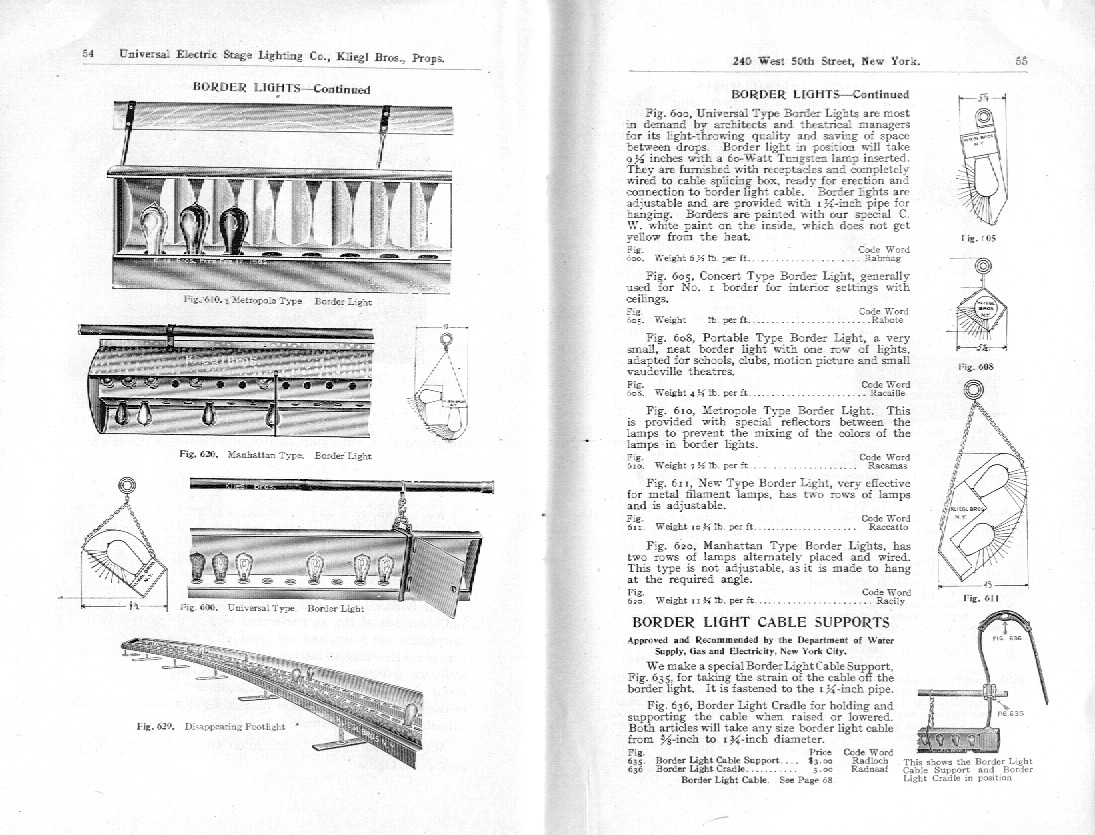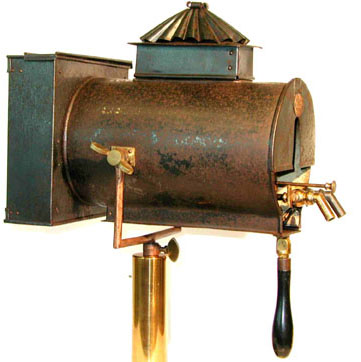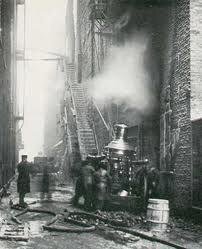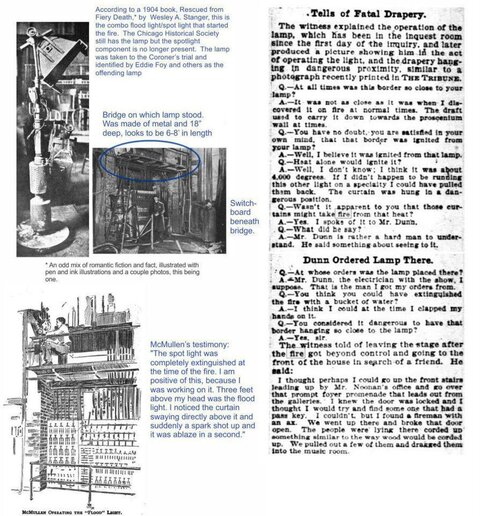I'm trying to make some of the 1903 Chicago Iroquois Theatre fire more understandable to folks like myself who are clueless about theaters.
Anyone who has read about the fire knows how the curtain hung up on the left side of the stage, on some sort of a light reflector that had been used in the last number and should have been swung back/folded back when that number was completed. It wasn't, so when the asbestos curtain was lowered, the reflector was an obstacle. I'd like to find a picture of a similar light fixture but don't know what I'm looking for. In the 1914 Kliegl catalog is pictured something called a border light. Were border lights sometimes mounted to the side of the proscenium? Would they have had a hinged reflector?

BTW, feel free to comment on my efforts so far. And dang, if you like the site even a smidge, please like it so Facebook will unveil the statistics. I need 30 likes and have only 9. TY
Chicago Theater Fire at Iroquois Theatre's Photos | Facebook
Theater | Facebook
Anyone who has read about the fire knows how the curtain hung up on the left side of the stage, on some sort of a light reflector that had been used in the last number and should have been swung back/folded back when that number was completed. It wasn't, so when the asbestos curtain was lowered, the reflector was an obstacle. I'd like to find a picture of a similar light fixture but don't know what I'm looking for. In the 1914 Kliegl catalog is pictured something called a border light. Were border lights sometimes mounted to the side of the proscenium? Would they have had a hinged reflector?

BTW, feel free to comment on my efforts so far. And dang, if you like the site even a smidge, please like it so Facebook will unveil the statistics. I need 30 likes and have only 9. TY
Chicago Theater Fire at Iroquois Theatre's Photos | Facebook
Theater | Facebook





